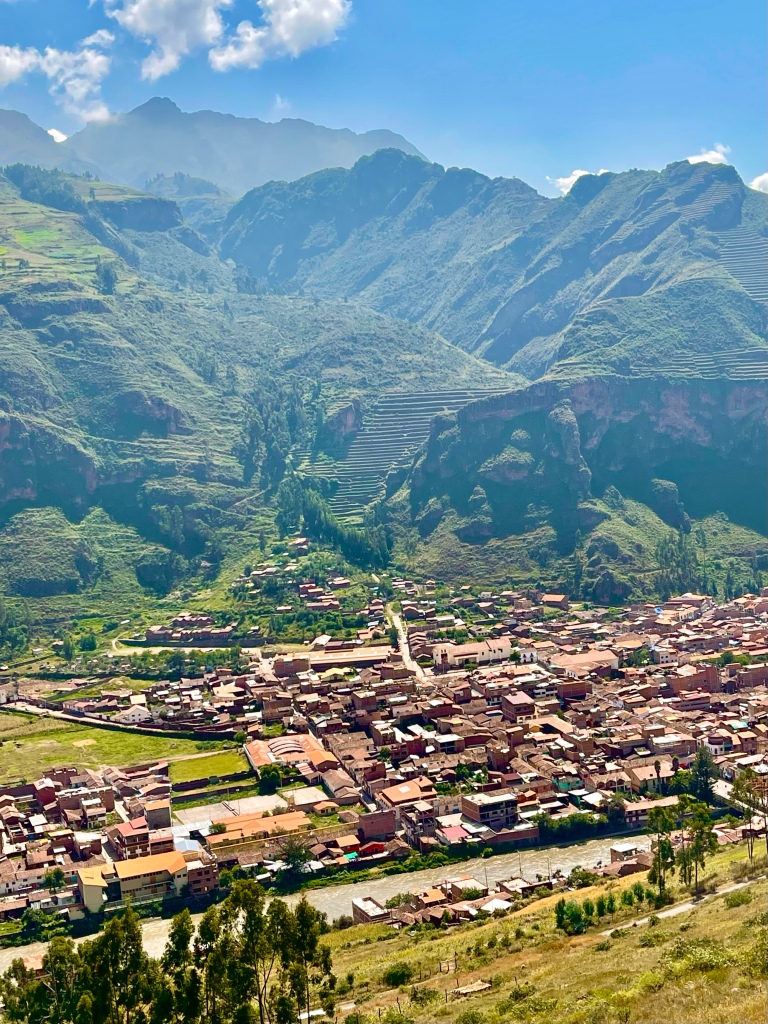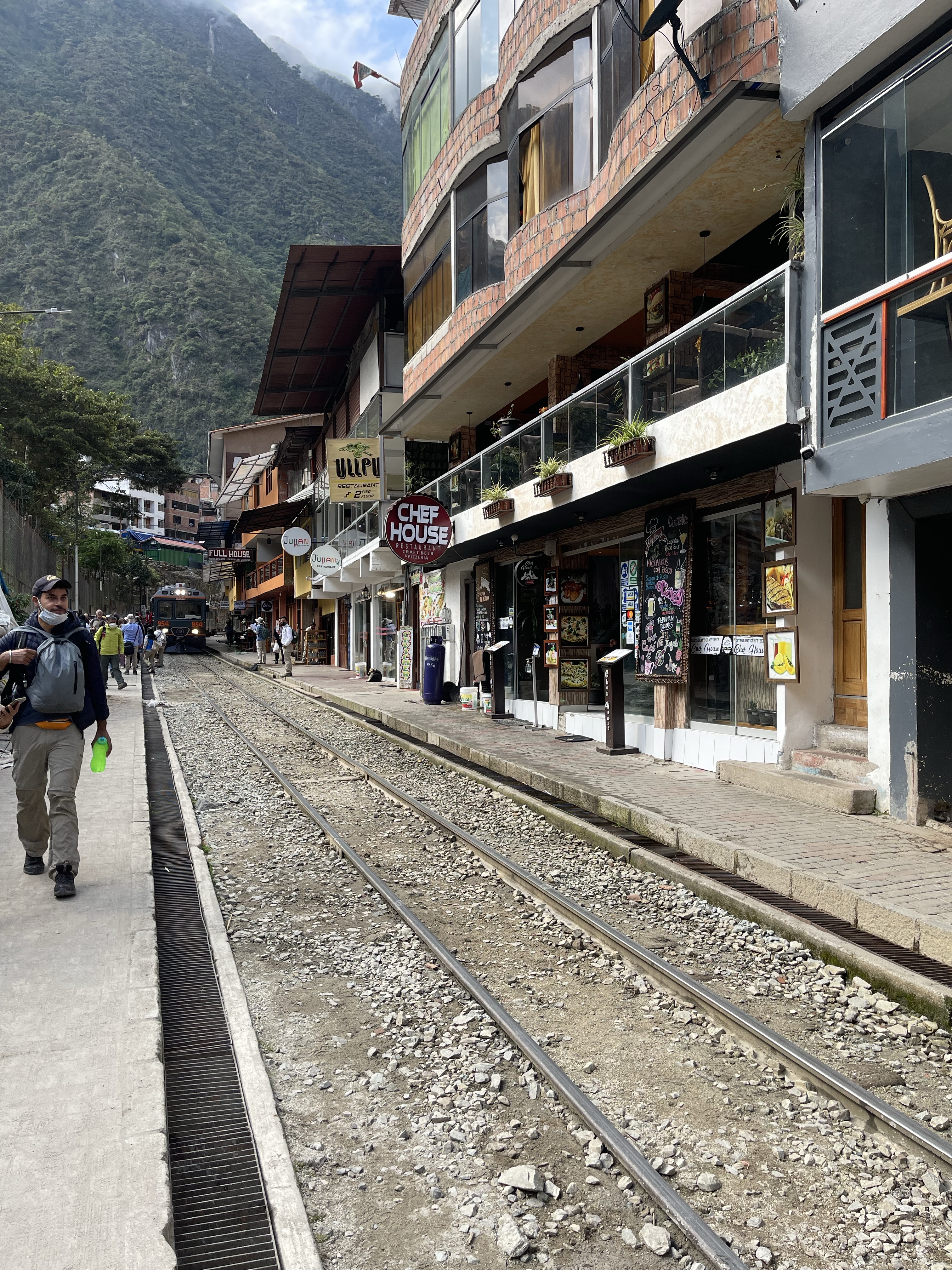I traveled to Peru in April on a Machu Picchu Express Tour (4 Days) with Gate 1 Travel. The tour package included roundtrip flights for Miami-Cuzco and Lima-Cuzco, hotels in Urubamba (Sacred Valley) and Cuzco, transportation, four meals: three breakfasts, one dinner, entrance fees for attractions, and tips for hotel staff. All other meals and non-included expenses were the responsibility of each traveler. On my tour, there were a total of 20 people ranging from ages 9 to 70.
In this blog post, I will focus specifically on the places my group visited as hotels, flight itineraries, and trip itineraries may differ depending on which tour (4-days, 7-days, 10-days, etc.) you decide to take.
Places Visited
Cusco

Once known as “the navel of the world,” Cusco was the capital of the Incan empire. Cusco sits at approximately 11,152 feet above sea level and every year, millions of tourists, choose Cusco as a starting point before traveling to see Machu Picchu. We stayed in Cusco for one night to adjust to the new altitude, and it was definitely not enough time. Most of us were adjusting from 272 feet (83 meters) to 11,152 feet (3,399 meters) above sea level. Fortunately, I had altitude sickness pills to help. To properly adjust to the altitude, a person would need at least 3-5 days. However, I did not have that much time for this trip. Other than taking altitude sickness pills, the key to adjusting to the high altitude was slow deep breaths (i.e. as in yoga), coca tea (provided at the hotel), and walking, at a slow pace with frequent breaks. I stress the importance of taking your time walking and taking breaks because after walking outside for only 1-2 minutes, you will feel as if you’d been sprinting the entire time. The guide advised the group to be mindful of what we ate the first two days as some foods would make us slow and sluggish (meat). As such, the guide suggested that we eat a lot of carbohydrates (pasta, bread, etc.). If needed, most hotels provide oxygen for those who have difficulty adjusting to the altitude. There are also many stores that sell portable oxygen cans (approximately the size of a can of soda) for you to have on hand during your trip.
Other than being known as a starting point for Machu Picchu, there are many things to do in Cuzco, and one of the reasons why I really enjoyed the city. A few places I visited included:
Santo Domingo and Coricancha

Plaza de Armas

Cusco Cathedral

Urubamba (Sacred Valley)
Urubamba, approximately 9,420 feet (2,870 meters) above sea level, is the largest town within the Sacred Valley. Breathing at this altitude was much easier than at Cusco. Surrounding the city of Urubamba are the Andes Mountains and can be viewed between the peaks of the Sacred Valley (see picture above). The Incas called this area the “Sacred Valley” because this was the only area where corn would grow on agricultural terraces alongside the mountains due to the lower elevation, fertile soil, and warmer temperatures. Urubamba River runs through the valley all the way to Aguas Calientes, the town that lies at the bottom of Machu Picchu. My group stayed here for one night prior to Machu Picchu.

Pisac Market
While in the Sacred Valley, we visited the infamous Pisac Market in the city of Pisac, approximately 9,751 feet (2,972 meters) above sea level. If you’re looking for souvenirs, this is your place! Here, locals sell their crafts, clothes (ponchos, T-shirts), food, and other items (pan flute). Make sure you bargain for items here as there are no set prices.


Ollantaytambo

Machu Picchu


Celebrate as one of the new seven wonders of the world, Machu Picchu is a UNESCO heritage site that sits at approximately 7,972 feet (2,430 meters) above sea level. The sacred site was abandoned by the Incas, for reasons unknown, before the Spanish conquest of the Incan empire. Machu Picchu was never occupied by the Spanish due to difficulty accessing the site or possibly not knowing it existed. Because Machu Picchu is 3,000 feet lower than Cuzco, I could breathe a lot better even though I still felt like I was sprinting when walking up stairs, inclines, or similar.
*Pictured above Llamas*
Visiting Machu Picchu has always been on my list of places to visit, and I’m happy that I finally got the opportunity to see this amazing site. Traveling to Machu Picchu required a 1.5-hour train ride from Sacred Valley (Ollanta) station to Machu Picchu Pueblo (Aguas Calientes). My group took the Voyager train. During my trip, masks were required (N-95, KN-95, or two surgical masks) on the train, there was no food service, and you could not remove your mask to eat or drink anything you may have brought with you on the train. Check https://www.perurail.com/ before your trip to check the rules as they change frequently.
Once we arrived at Aguas Calientes, we had to wait in line to catch a bus that would take us to the top of Machu Picchu. The bus holds approximately 20-26 people in a two-seater (on each side) configuration. The bus ride is one of the reasons I avoided coming to Machu Picchu years ago. I knew that going up a winding road, which could only fit one bus, with a cliff drop on one side, would make me quite nervous. However, I was already there and had no choice at this point but to go through with it. Talking with one of the group members and not looking out the window made it easier for me, although the ride felt like it would never end (the bus ride lasted 20-25 minutes). So if you’re nervous about the ride, I suggest the following: don’t sit by the window, shut your eyes, talk to the person next to you, or listen to music/read a book, and your time on the bus will go by much faster.
From the tourist information center at Machu Picchu, you will have to walk at least 1 mile to the ruins of the sacred site. Unless you have already been in Cuzco or Urubamba (or another town in Sacred Valley) for at least 2-3 days to adjust the high altitude, I strongly suggest you reconsider and wait another day before visiting Machu Picchu. You will have to climb up steps and inclines to get to Machu Picchu, that will be a challenge due to the altitude. If you need or think you need oxygen for this trip, buy a can or two and bring it with you. I didn’t use oxygen during my trip but took frequent breaks. When you see Machu Picchu, you know it was worth it!

After all that hard work, we reached the ruins of Machu Picchu! From that point, things got better, as it was a downhill, a flat pathway, and fewer steps to go down or up. You could easily spend hours browsing the sacred site or just in amazement of the beauty surrounding Machu Picchu. If clouds are blocking your view (at the entrance), wait for them to clear because you cannot go backward on the path and will miss the opportunity to take the infamous Machu Picchu photo. Enjoy your trip to Peru!
Discover more from Melanin Jetsetter
Subscribe to get the latest posts to your email.














We were there in late October. Great weather. Discovered after return there are other sites in Peru even more magnificent than this in the country. But, now the infrastructure is not yet strong enough to offer easy access. Great country with great potential. Glad we went.
LikeLiked by 1 person
I’d be interested in visiting those sites in the future. Hopefully one day.
LikeLike
Looks so beautiful! I hope to go someday
LikeLiked by 1 person
It’s so worth it!
LikeLike